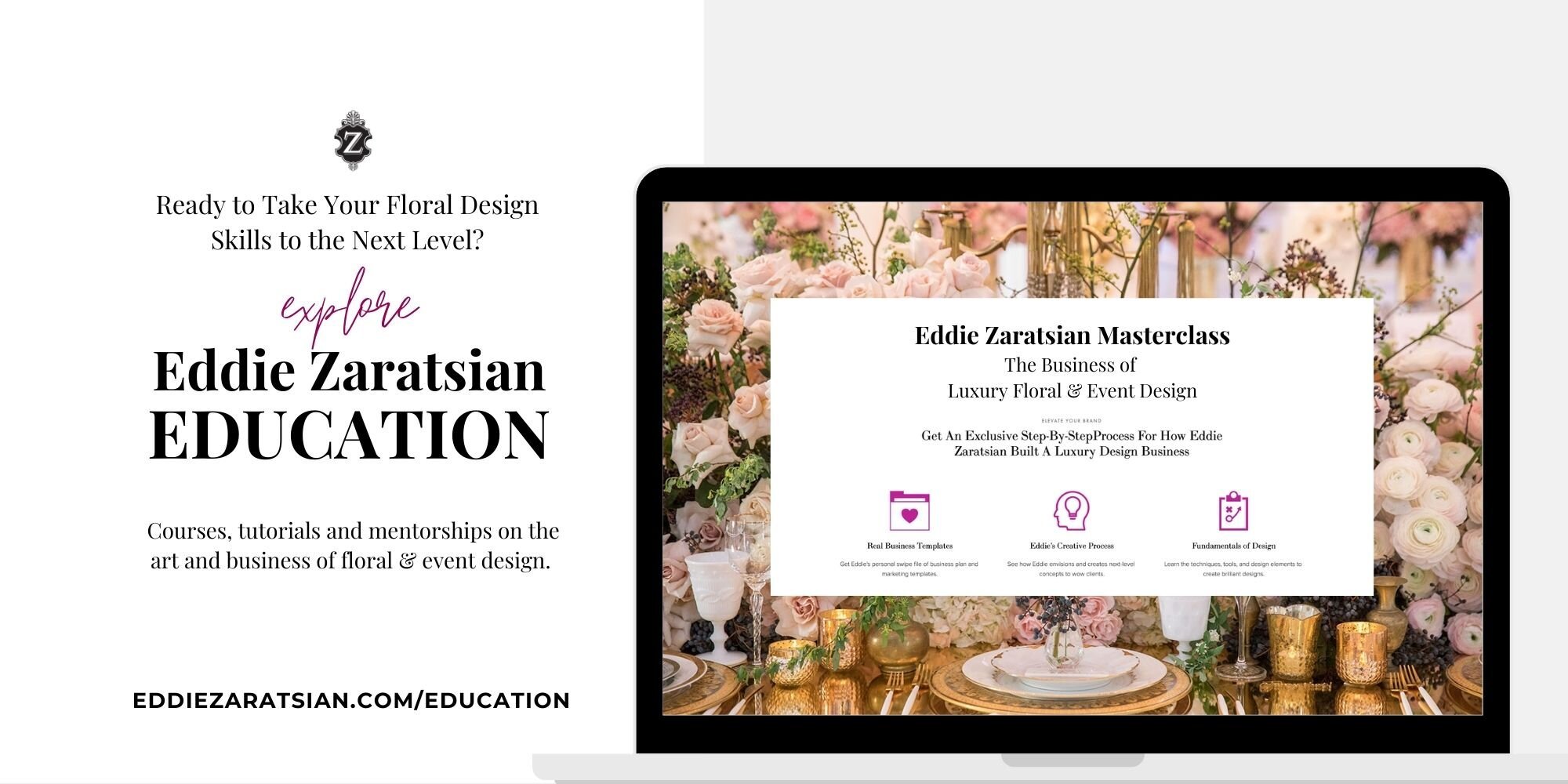Wedding Planners - Is it Time to Offer Design Services?
In planning an event, many interwoven elements come together to create the final spectacle. You’ve got the logistical side in planning, the décor and details of design, and the experiential factors contributing to the guest experience. Each of these things requires a different mindset and even a separate set of skills, but that’s not to say you can’t specialize in a turnkey client experience.
In fact, many planners consider taking the plunge into design and becoming a multi-faceted event professional. The ability to offer both services at high quality means one less thing for a client to do and will effectively increase revenue and client satisfaction simultaneously. However, adding design services to your repertoire is not a decision to be taken lightly. In addition to the additional work you’ll provide clients, you also need to factor in the time it takes to restructure your business internally to adjust for your new services.
If you’re considering bringing in new services to your business, here are some considerations to keep in mind while planning your expansion…
1. Know your motivations
Before dedicating any further effort to this, you need to determine why you are truly considering adding design to your offerings. Does it feel like a natural step for your business, and are you prepared to go that route? While expanding your services can certainly be a moneymaker, you need to be passionate about the work that comes with design and décor. Otherwise, no invoice in the world will make it worthwhile.
2. Lean on client feedback
Your clients are the very best resource for feedback, as they’ve gone through your brand experience. They understand your strengths and weaknesses from an insider’s perspective. Thus, you need to gauge the type of feedback you’re receiving from clients regarding your services. Do they often request design and décor services? Are they asking for creative advice in other aspects of planning their big day? If you’re constantly fielding requests for design referrals, it very may well be a good step for you to add it under your own brand.
3. Craft your team accordingly
Making such a significant shift in your services will require your team to adapt to the changes, but you may need to consider hiring additional support to fill in the gaps. Make sure that your team is capable of making design decks, performing creative research, discussing creative elements, and so on. It’s one thing to be the creative genius at the helm of your business, but it’s another to also surround yourself with a team that just gets it.
4. Get your feet wet
The biggest part of adding design services to your business is simply just to start doing the work. Get to know your local venues, take tours of their event spaces, and begin ideating design schemes. You can’t just go by pictures of a property; your plan of attack will be all about the client’s vision. They may want to start from scratch and deck out the room, or they may be more inclined to add to the space and spruce up the existing décor. Listen to what your clients are saying and do whatever you need to do in order to get a clear picture of the canvas you’re working with before tackling the details.
5. Communicate effectively
When working with a client for design, you need to help them achieve their vision — a feat that is often easier said than done. Start by asking a lot of questions, perhaps even more than you would normally deem necessary. The more you can find out about a client’s dream event, the better. For me, I want to know everything from who the photographer is to the style of the dress to the client’s interests and hobbies. Each of these elements plays a role in the overall design — a specific photography style may affect the color palette, or perhaps a bride would like the ceremony space to be inspired by the details of her dress.
6. Establish trust
Of course, you can’t show a client what their event will look like before it happens, so trust becomes an essential piece of the design puzzle — even more than it is in the way of planning. Practice active listening and hit all of their keywords as you explain your action plan. Make sure they know you’re paying full attention to them and trying to capture the essence of their vision. If they mention the words “minimalist” and “delicate,” be sure to include those exact terms in your plan to show that you’re on the same page.
Pairing design with planning services is an effective way to meet client needs while also building in more room for growth and increased revenue. While there is certainly a transitionary period for ramping up in design, the creative component will become more natural with time.
Photos by John & Joseph Photography






